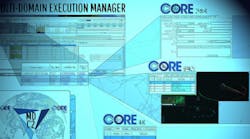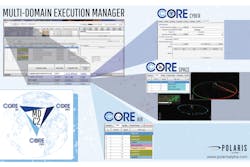Download this article as a .PDF
Defense contracts usually are awarded to the largest companies—naturally, those with the broadest engineering design and problem-solving capabilities. But every so often, a smaller company wins the prize, and usually for a unique set of skills unmatched by others. In the case of Polaris Alpha—which recently won a $48 million IDIQ contract to provide research, development, and technical services to the Naval Research Laboratory (NRL) Electronics Science and Technology Division (ESTD)—the capabilities extend across a wide range of technology areas, from RF to software to optoelectronics.
Small in size compared to major defense contractors, Polaris Alpha and its EOIR Technologies arm will work with NRL on the development of semiconductor materials and devices for next-generation defense sensing and imaging systems. The goal is to produce multidomain solutions that are effective on land; at sea; and in the air, space, and cyberspace for comprehensive spectrum management.
Polaris Alpha was created with the idea that a company can never have enough creative designers or problem solvers. The company was formed from a number of smaller, separate companies—EOIR Technologies, Intelligent Software Solutions (ISS), Proteus Technologies, and Intelesys Corp.—which were combined to leverage the creative interaction between and among groups. Now an organization with the agility of a focused mid-sized company strong in handling issues of national security, it still has individual groups. However, they build on their specialties, such as software development, to quickly create solutions—most recently in cyberspace.
“We have a lot of initiatives to affect cyberattacks,” said Marcus Featherston, executive vice president of Mission Solutions for Polaris Alpha. “If there is a kinetic attack, such as a missile strike, we have systems, such as radar, that provide early detection and warning of the missile. But for a cyberattack, there is no warning.” Featherston shared that artificial intelligence (AI) may provide the key to defending against a cyberattack: “We have seen that AI can identify these threats, and we have been working with DARPA to protect against these threats.”
To handle the latest requirements in the cyber and signals intelligence (SIGINT) areas, the company produces cyber and SIGINT software solutions for the DoD and the intelligence community. These solutions make it possible to monitor and visualize an adversary’s capabilities and enable actionable decision-making on behalf of the national security. As the software illustrates (see figure), military actions no longer involve one part of the armed forces, but must keep battle groups across the multiple domains in constant contact.
“We can’t afford to lose communications during a conflict,” said Featherston. He uses the scenario of ground troops relying on a satellite as an example of multidomain command, communications, and control (C3): armed forces are no longer engaged on simply land, or at sea, or in the air. When satellite communications is being jammed, either by an aviation-based or ground-based system, forces within all domains—including in the cyber realm—must contribute to locating and neutralizing the jammer to maintain communications.
Featherston mentioned the company’s work with the U.S. Air Force at Vandenberg AFB in California and the Air Force Research Labs (AFRL) in Rome, N.Y. on key areas of interest for the U.S. Army—notably on space situational awareness and ways to apply machine intelligence within defense electronics systems. “We use simulations in many ways, to model all the connections or PCBS in production,” he said. “We also use simulation at the system level, to model and build a system and then model and build an enemy’s system to see how well the original system does against it.”
Featherston also noted the need for more efficient testing to remain competitive. “There is a need for much more automated testing,” he explained. “We have to shrink the cycles for hardware and software development. Our enemies don’t spend as much time developing threats, so we must be ready with defense systems or responses.”
Given the growing complexity of defense electronic systems, there will be a place for larger defense contractors to develop them. But with the agility of new threats, the creativity and responsiveness embodied by mid-sized contractors such as Polaris Alpha provide the means to create rapid responses to those threats. Because of the multiple domains of the modern military, effective responses to the latest threats must reach across all those operating domains simultaneously. This presents its own challenges in terms of systems compatibility and interoperability.
Mid-sized contractors such as Polar Alpha can take fresh looks at traditional as well as new tactical problems. These firms develop innovative solutions that help to synchronize and protect the branches of the armed forces across the multiple domains of modern warfare, all the while providing large scale software and system integration for complete solutions.


